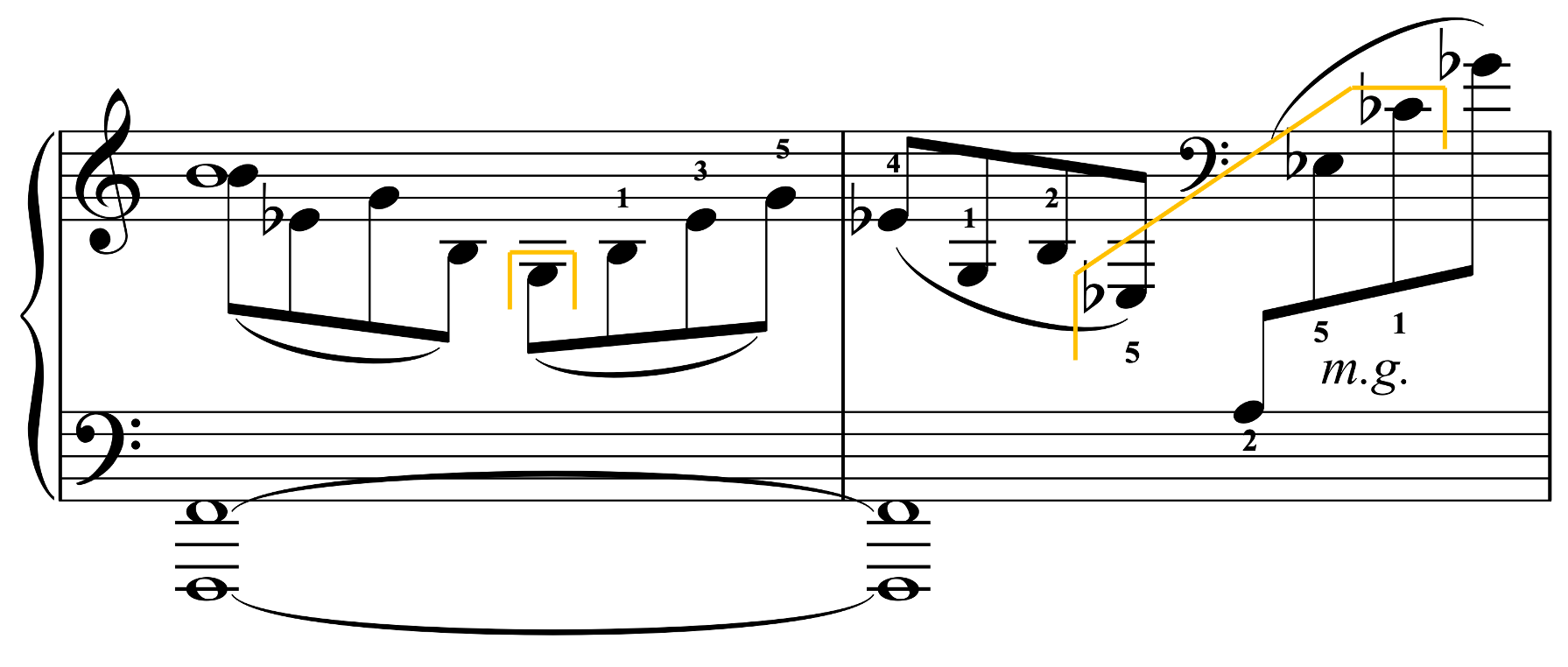“Most editions place the 2/4 bar on the next page. Grabbing the B in the right hand allows just enough time for the page turn.”
Submitted by Michael Clark
Published on 1/6/2020

“Most editions place the 2/4 bar on the next page. Grabbing the B in the right hand allows just enough time for the page turn.”
Submitted by Michael Clark
Published on 1/6/2020

“Taking the C in the left hand helps the top line stay legato without unreasonable stretching.”
Submitted by Michael Clark
Published on 4/4/2020

“Taking the A in the left hand allows a simpler fingering in the top line.”
Submitted by Michael Clark
Published on 4/4/2020

“The 4/4 bar starts a new page in most editions, so taking the B in the right hand gives enough time for the left hand to turn the page. Grabbing the G-flat with the left hand eliminates an awkward stretch in the right hand. I play the final G with the left hand as Poulenc suggests.”
Submitted by Michael Clark
Published on 1/6/2020

“Finishing with an octave in the right hand is more secure.”
Submitted by Michael Clark
Published on 1/6/2020

“I can make the middle line more legato with this fingering (and avoid a stretch).”
Submitted by Michael Clark
Published on 4/4/2020

“Taking these two notes in the right hand allows the left hand to easily prepare for the next bass note.”
Submitted by Michael Clark
Published on 4/4/2020

“Taking some of the off-beat chords in the left hand allows the melody with be played with a more legato fingering. It also prevents stretches that may be uncomfortable for some hands.”
Submitted by Michael Clark
Published on 4/4/2020

“I think taking the B in right hand is preferable to striking the bass note early. This fingering, in which the notes can be struck simultaneously, facilitates a cleaner pedal change as well.”
Submitted by Michael Clark
Published on 4/4/2020
The bracket in black is Poulenc’s. The suggested redistribution is marked in gold.

“I find that this extremely fast passage is most reliable whenever I lighten the load of the right hand.”
Submitted by Michael Clark
Published on 4/4/2020

“The E can be easily reached by the left hand, avoiding a stretch in the right hand that would disrupt the legato connection in the melody.”
Submitted by Michael Clark
Published on 1/6/2020

“This fingering better balances the workload between the hands.”
Submitted by Michael Clark
Published on 4/4/2020

“In most editions, the first two measures shown here are separated by a page turn. Taking most of the notes in the right hand allows the left hand to turn the page.”
Submitted by Michael Clark
Published on 1/6/2020

“Taking the lowest note of this run in the left hand eliminates a position shift in the right hand and gives it a momentary break.”
Submitted by Michael Clark
Published on 4/4/2020

“Taking the C in m. 38 in left hand eliminates a position shift at the start of that measure and gives more time for the leap to the higher register.”
Submitted by Michael Clark
Published on 4/4/2020

“The lower D in the treble staff in m. 55 can be played with the left-hand chord, eliminating a position shift in the right hand.”
Submitted by Michael Clark
Published on 4/4/2020

“Taking these extra notes in the left hand makes the right-hand register change easy.”
Submitted by Michael Clark
Published on 1/6/2020

“This fingering is designed to eliminate unnecessary positions shifts and divide the notes between the hands as evenly as possible.”
Submitted by Michael Clark
Published on 1/6/2020